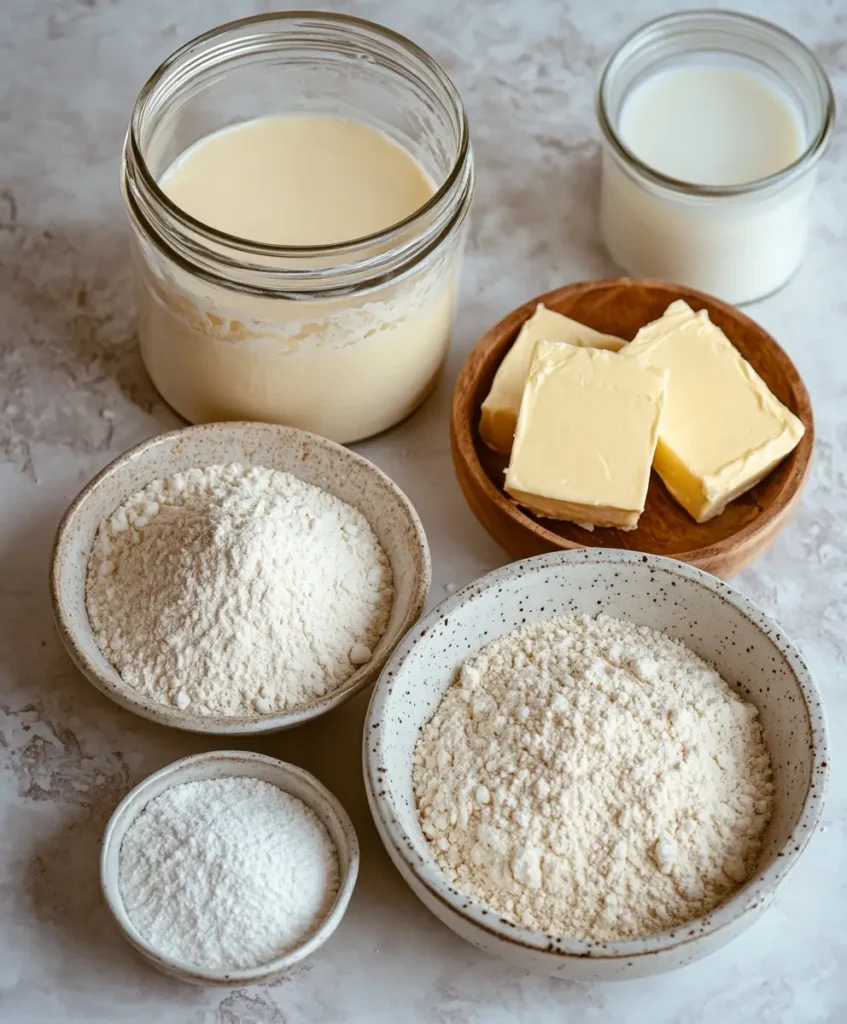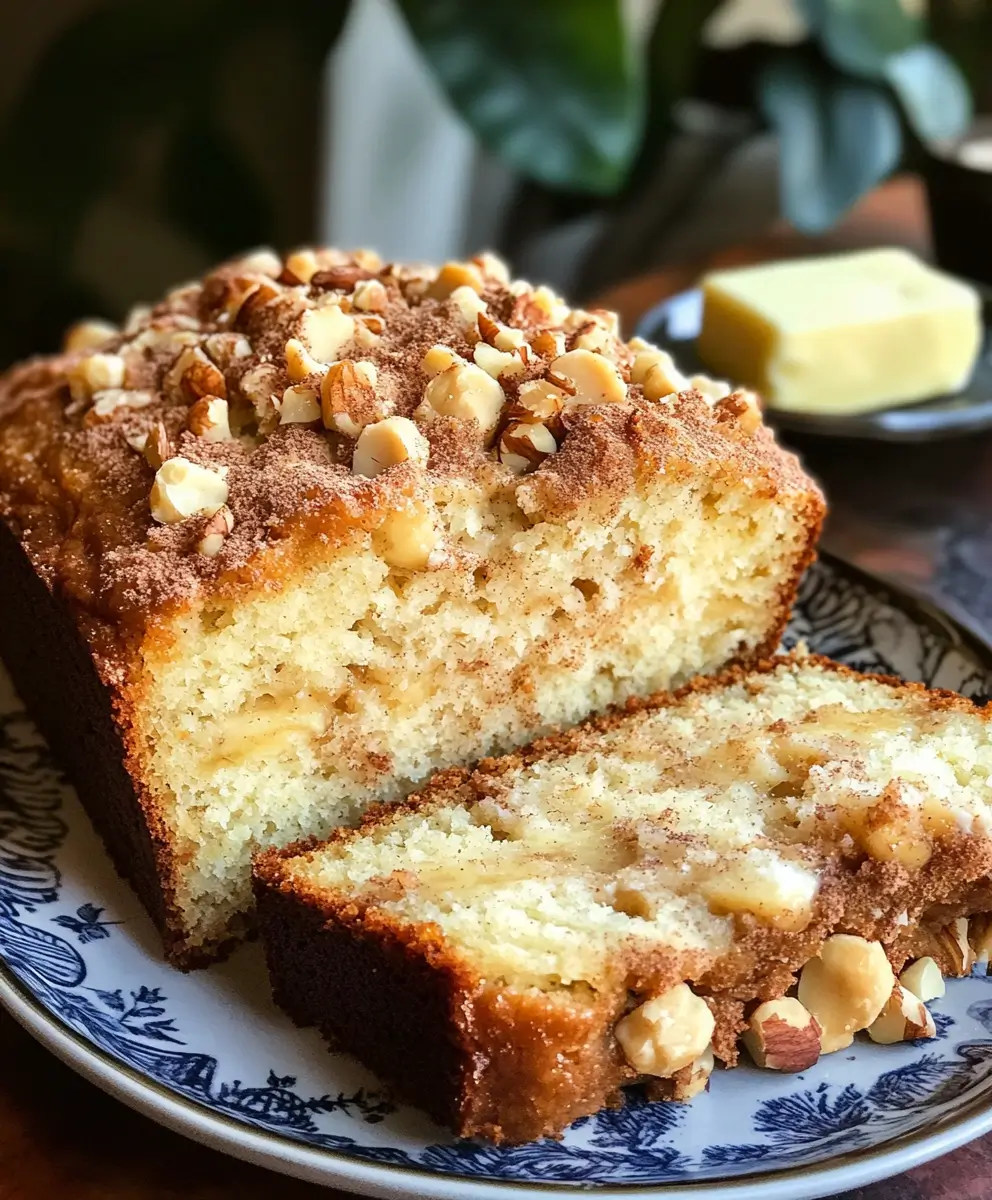Sourdough croissant bread is a delicious fusion of two beloved baked goods: sourdough’s tangy, fermented depth and the rich, flaky layers of a classic croissant. Unlike traditional croissants, which rely on commercial yeast for leavening, this version harnesses the natural wild yeast and bacteria in a sourdough starter, resulting in a deeper flavor, a more digestible crumb, and a beautifully crisp texture.
One of the most significant advantages of using a sourdough starter is its complex, slightly tangy taste, along with improved texture and shelf life. The slow fermentation also enhances the dough’s digestibility and nutrient absorption, making it a healthier alternative to yeasted pastries.
However, making laminated sourdough dough is no small feat—it requires patience, precision, and time. The process involves carefully layering butter between folds of dough, ensuring proper fermentation, and maintaining the right balance of temperature and technique. While challenging, the reward is a homemade sourdough croissant bread that is unbelievably flaky, buttery, and bursting with rich sourdough flavor—a true masterpiece for any home baker.

What Is Sourdough Croissant Bread?
Definition & Characteristics
Sourdough croissant bread is a flaky, buttery, and naturally leavened pastry that combines the best elements of traditional croissants and sourdough bread. Made through lamination, where layers of butter are folded into the dough, it achieves the signature crisp, golden crust and airy interior. However, unlike conventional croissants, this version relies on a sourdough starter instead of commercial yeast, resulting in a more complex and nuanced flavor profile.
How It Differs from Regular Croissants
While both croissants and sourdough croissant bread share a similar laminated structure, they have some key differences:
- Leavening Agent: Traditional croissants use instant or active dry yeast, while sourdough croissant bread relies solely on a natural sourdough starter.
- Fermentation Time: Sourdough croissant dough requires a much more extended fermentation period, often 24–48 hours, to develop its flavor and structure.
- Taste & Texture: The extended fermentation process gives sourdough croissant bread a more profound, slightly tangy flavor, enhancing its chewiness and flakiness.
Why Use a Sourdough Starter?
Switching to a sourdough starter offers several benefits beyond just flavor:
- Tangy Depth: The natural fermentation creates a richer, more complex taste than yeasted croissants.
- Improved Digestibility: The long fermentation breaks down gluten and phytic acid, making it easier to digest.
- Better Texture & Shelf Life: The acidity in the sourdough helps maintain freshness and prevents staling, keeping the croissant bread softer for longer.
If you’re looking for more ways to use your sourdough starter, check out these Sourdough Discard Brownies. They’re a delicious way to use any extra starter while enjoying a decadent, chocolatey treat.
Ingredients & Equipment for Sourdough Croissant Bread
Creating the perfect sourdough croissant bread requires high-quality ingredients and the right tools. Since this pastry depends on lamination and fermentation, every component is crucial in achieving the ideal texture and flavor.
Key Ingredients
- Sourdough Starter (Active & Bubbly): A well-fed, mature starter is essential for natural leavening, structure, and tangy flavor.
- High-Protein Flour: Using bread flour or strong all-purpose flour ensures the dough has enough strength to hold its shape and develop flaky layers.
- European-Style Butter: High-fat butter (82%+ fat content) is crucial for lamination, resulting in a rich and tender crumb.
- Milk, Sugar, Salt, and Eggs:
- Milk adds tenderness and enhances browning.
- Sugar provides a slight sweetness and aids in fermentation.
- Salt balances flavors and strengthens gluten.
- Eggs contribute richness and color to the final bake.
Must-Have Equipment
- Rolling Pin & Dough Scraper: Essential for rolling and shaping the laminated dough with precision. A dough scraper helps manage sticky dough and clean the work surface.
- Stand Mixer (Optional but Helpful): While not necessary, a stand mixer with a dough hook makes kneading more manageable and ensures a smooth and well-developed dough.
- Baking Sheet & Parchment Paper: A sturdy baking sheet supports even baking, while parchment paper prevents sticking and simplifies cleanup.

How to Make Sourdough Croissant Bread
Making sourdough croissant bread is a labor of love that requires patience, precision, and time. Below is a detailed step-by-step guide to help you achieve the perfect flaky, buttery layers.
Step 1: Preparing the Sourdough Starter & Dough
Before starting, make sure your sourdough starter is active and bubbly—this is key to achieving a good rise and complex flavor.
- Feed the starter a few hours before mixing the dough and allow it to reach peak activity.
- Mix flour, milk, sugar, eggs, and a starter in a large bowl until a shaggy dough forms.
- Knead until smooth and elastic, then cover and allow it to ferment in bulk for 4–6 hours at room temperature (or overnight in the fridge for better flavor development).
Step 2: Laminating the Dough
Lamination is layering butter into the dough to create flaky layers. It is essential to keep everything cold.
- Roll out the dough into a large rectangle and place chilled, European-style butter in the center.
- Fold the dough over the butter and roll it out carefully.
- Perform three folds (“book” or “letter” folds), chilling the dough between each fold for at least 30 minutes to maintain butter integrity.
Step 3: Shaping & Proofing the Croissant Bread
Once the lamination is complete, it’s time to shape and proof.
- Roll out the dough one final time to the desired thickness.
- Shape into loaves or individual layered pastries, depending on your preference.
- Cover and allow the dough to proof for 8–12 hours in a calm environment (around 68°F/20°C) until puffy but not overproofed.
Step 4: Baking to Perfection
After proofing, it’s time to bake!
- Preheat your oven to 375°F (190°C).
- Lightly brush the dough with an egg wash for a golden crust.
- Bake until golden brown and flaky (about 20–25 minutes, depending on the size).
- Allow the croissant bread to cool slightly before slicing, letting the layers set for the best texture.
Tips, Common Mistakes & Troubleshooting
Making sourdough croissant bread requires precision and patience, but minor missteps can impact the final result. Here are some expert tips and common mistakes to avoid to help you perfect your bake.
Pro Tips for Success
- Use a well-fed sourdough starter: A strong, bubbly starter ensures proper fermentation and rise. Feed it at least 4–6 hours before mixing the dough.
- Chill the dough between folds: Keeping the butter and dough cold prevents it from melting and ensures distinct, flaky layers.
- Avoid overproofing: Before baking, the dough should be puffy but not deflated. Overproofing weakens the structure, leading to a collapsed texture.
Common Mistakes to Avoid
- Butter leaking out during baking: This happens when the dough gets too warm. Always chill it before rolling and folding to maintain distinct layers.
- Dough too tough to roll: If the dough resists rolling, let it rest for 10–15 minutes to relax the gluten.
- Croissants too dense: A weak starter or rushed fermentation can cause a thick texture. Ensure your starter is active and allow enough fermentation time for proper aeration.
Final Thoughts & Serving Suggestions
Making sourdough croissant bread is a rewarding process that requires patience, precision, and high-quality ingredients. From properly feeding your sourdough starter to mastering lamination and fermentation, each step plays a crucial role in achieving the perfect flaky texture and deep, tangy flavor.
Best Ways to Enjoy Sourdough Croissant Bread
This adaptable bread can be enjoyed in various ways:
- Plain: Appreciate its crisp, buttery layers straight from the oven.
- With Butter & Jam: A classic combination that enhances its rich flavor.
- As a Sandwich: Use it as a base for a gourmet sandwich with cheese, meats, or fresh vegetables.
Experiment & Share Your Results
Baking with sourdough is an ongoing learning experience, and each bake offers an opportunity to refine your technique. Feel free to experiment with different fillings, flours, or fermentation times to create your unique version of sourdough croissant bread. If you try this recipe, share your results and experiences to inspire other bakers on their journey.
FAQs
1. How long does sourdough croissant bread stay fresh?
Sourdough croissant bread stays fresh for 2–3 days at room temperature when stored in an airtight container. You can also refresh it by warming it in the oven at 325°F (160°C) for a few minutes.
2. Can I make sourdough croissant bread without a stand mixer?
Yes. While a stand mixer makes kneading easier, you can knead the dough by hand. It will take longer, but using the stretch and fold method during bulk fermentation will help develop gluten strength.
3. Why is my dough too sticky to handle?
The sourdough dough can be naturally sticky due to hydration levels. If it’s too sticky, try:
- Chill it for 15–20 minutes before rolling.
- Lightly flour your surface (but avoid adding too much flour, as it can toughen the dough).
- Using a dough scraper to help manage the dough.
4. Is it possible to substitute all-purpose flour for bread flour?
Yes, but the structure may be slightly weaker. Bread flour has a higher protein content, which helps develop a more substantial dough for better lamination. If using all-purpose flour, try mixing it with whole wheat or high-protein flour for added strength.
5. Can I refrigerate the dough overnight before laminating?
Yes, refrigerating the dough overnight after bulk fermentation can improve flavor and make laminating it easier. Just be sure to let it warm slightly before rolling to prevent cracking.
6. Can I freeze baked sourdough croissant bread?
Yes. Once baked and cooled, wrap it tightly in plastic wrap and store it in the freezer for up to 2 months. To enjoy, reheat in a 325°F (160°C) oven until warm and crisp.

Sourdough Croissant Bread
Ingredients
For the Dough:
- 1 cup active sourdough starter
- 440 g bread flour or high-protein flour
- 1 cup whole milk (cold)
- ¼ cup granulated sugar
- 1 tsp salt
- 1 large egg
For the Butter Block:
- ½ cups European-style butter (82%+ fat content), chilled
For the Egg Wash:
- 1 egg (beaten with 1 tbsp milk)
Instructions
Prepare the Dough:
- In a large mixing bowl, combine sourdough starter, flour, milk, sugar, salt, and egg. Mix until a shaggy dough forms.
- Knead the dough until smooth and elastic (about 8-10 minutes).
- Cover and let the dough ferment at room temperature for 4-6 hours, or refrigerate overnight for deeper flavor.
Prepare the Butter Block:
- Place chilled butter between two sheets of parchment paper. Pound and roll it into a 6×6-inch square. Chill until firm.
Laminating the Dough:
- Roll out the dough into a 12×12-inch square. Place the butter block in the center and fold the dough over it like an envelope.
- Roll the dough into a rectangle and perform a "book fold" (fold the dough into thirds like a letter). Chill for 30 minutes.
- Repeat the rolling and folding process two more times, chilling between each fold.
Shaping & Proofing:
- Roll out the dough to ¼-inch thickness. Cut into triangles or rectangles, depending on your desired shape.
- Roll each piece into a croissant shape or layer for bread. Place on a parchment-lined baking sheet.
- Cover and proof at room temperature (68°F/20°C) for 8-12 hours, or until puffy but not overproofed.
Baking:
- Preheat the oven to 375°F (190°C).
- Brush the dough with egg wash for a golden crust.
- Bake for 20-25 minutes, or until golden brown and flaky.
- Cool slightly before serving.
Notes
-
Storage:
- Room temperature: Store in an airtight container for up to 2 days.
- Freezer: Wrap tightly and freeze for up to 2 months. Reheat in the oven before serving.
-
Tips:
- Keep the dough and butter cold throughout the process to ensure flaky layers.
- Use a well-fed sourdough starter for the best rise and flavor.
-
Variations:
- Add chocolate chips or almond paste for a sweet twist.
- Sprinkle with sesame seeds or everything bagel seasoning before baking.




